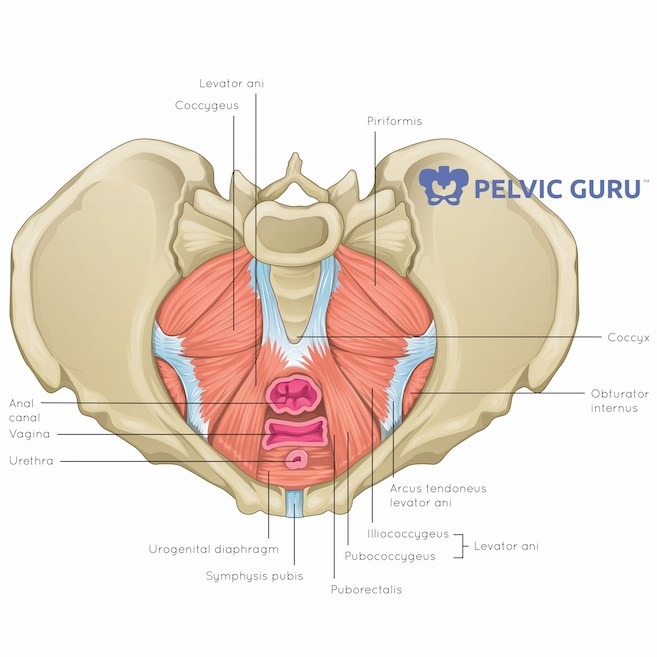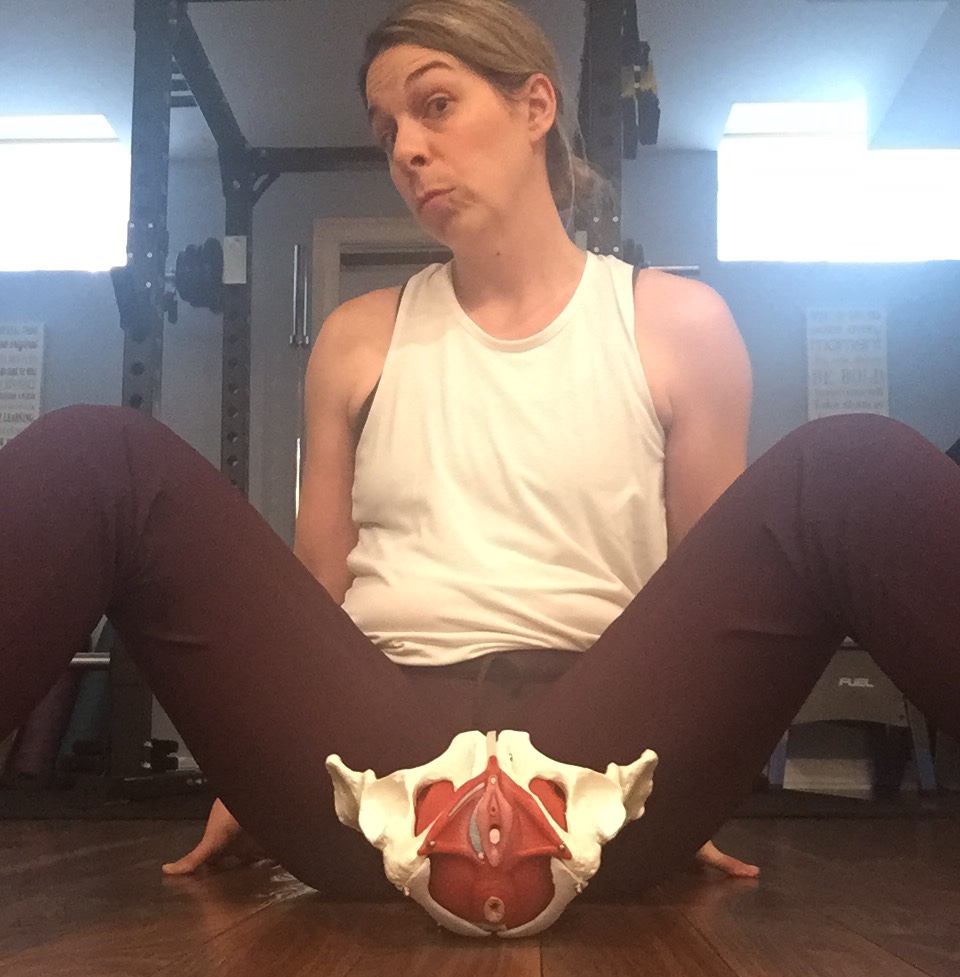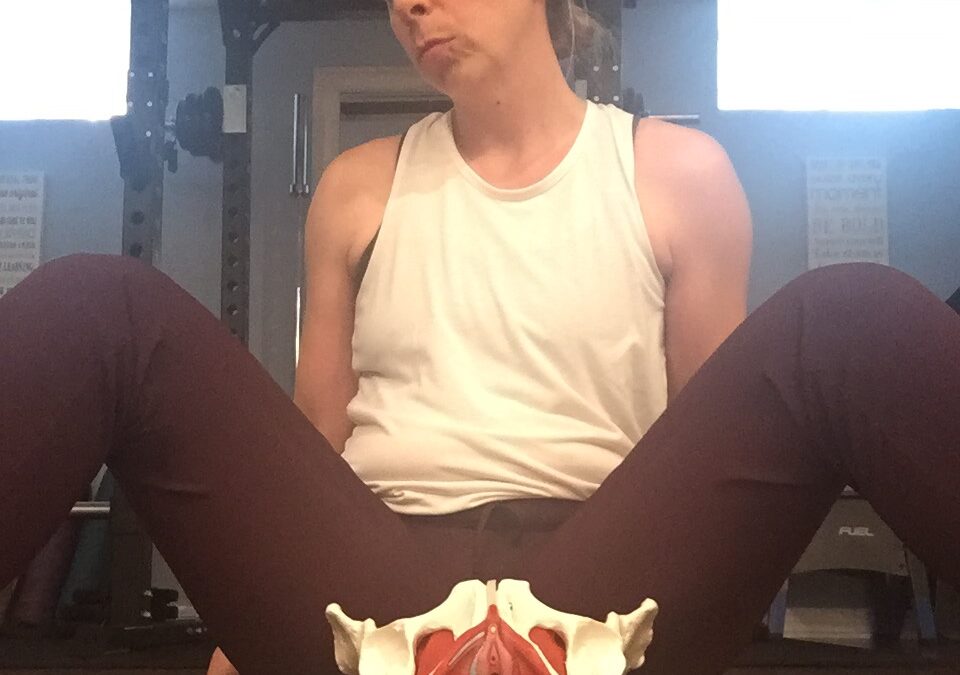WTF is a pelvic floor and why does it matter in weightlifting?
You’ve probably seen
But if you don’t know what on earth a pelvic floor is, you may just keep on scrolling to the next interesting post on IG
If you’re not clear on what this magnificent muscle group does, you’re in luck, my friend! I’m going to cover the basics in this post.
What Exactly Is Your Pelvic Floor?
Your pelvic floor is where you can find your vagina and anus. But it goes deeper than that. As you can see, these muscles go from the front and back and side to side of your pelvis. They’re also connected to your transverse abs and the lower back.
Here is the superior view of the pelvic floor. Permission to use copyright image from Pelvic Guru, LLC
These muscles are responsible for holding and releasing pee and poo, but they support your pelvic organs and sexual health, too.
There are 4 layers in this muscle group, but they don’t work alone. They work with your diaphragm, TA, and the small muscles in your spine known as the multifidus.
When coaching my clients who want to
Look at the vagina and anus. These need to open and close (contract and relax). If they have a hard time opening, they may need a little help relaxing. Conversely, if they can’t close, they may need to learn how to contract. (see a pelvic PT to confirm)
 Me, just chilling with my pelvic floor model on a rainy day.
Me, just chilling with my pelvic floor model on a rainy day.
Need to find a pelvic floor physiotherapist or fitness coach? The Pelvic Guru will hook you up with pelvic PTs and coaches from all over the world. Click here to find a qualified professional in your area
When you’re working out, these muscles will help to kick on your TA automatically. (It’s common they don’t as efficiently later in pregnancy and early postpartum.) If they don’t, they can be trained.
In my article, From Prolapse To Proud And Powerful, you can read my personal journey with prolapse and how I’ve been able to successfully manage it.
Why Does Your Pelvic Floor Matter When You Weightlift?
When it comes to weightlifting, these muscles are your biggest asset. But most women tend to push down on their pelvic floor instead of pulling them up and in. When the load gets really heavy (85% or more of your 1RM), the air in your belly tends to push down. If you’re bearing down and the air is following, leaks, feeling bulging down below or vaginal flatulence may happen.
This is by I preach the importance of your pelvic floor.
Oh, I almost forgot, using your pelvic floor can act as an internal weightlifting belt! Cool beans, right?!
If you’re reading this and thinking “is it normal to pee while I lift?” or “what’s that bulging out of my vag when I squat?” you’re not alone.
And this doesn’t mean you’re pelvic floor is dysfunctional. But again, rule it out by getting assessed by a pelvic PT.
All you may need is to learn how to lift a little differently. If you want some knowledge bombs dropped, tap here to download my free 10 Fitness Tips For Your Lady Parts: A step by step checklist to improve your pelvic health, now.
Ciao my friend,
Terrell


